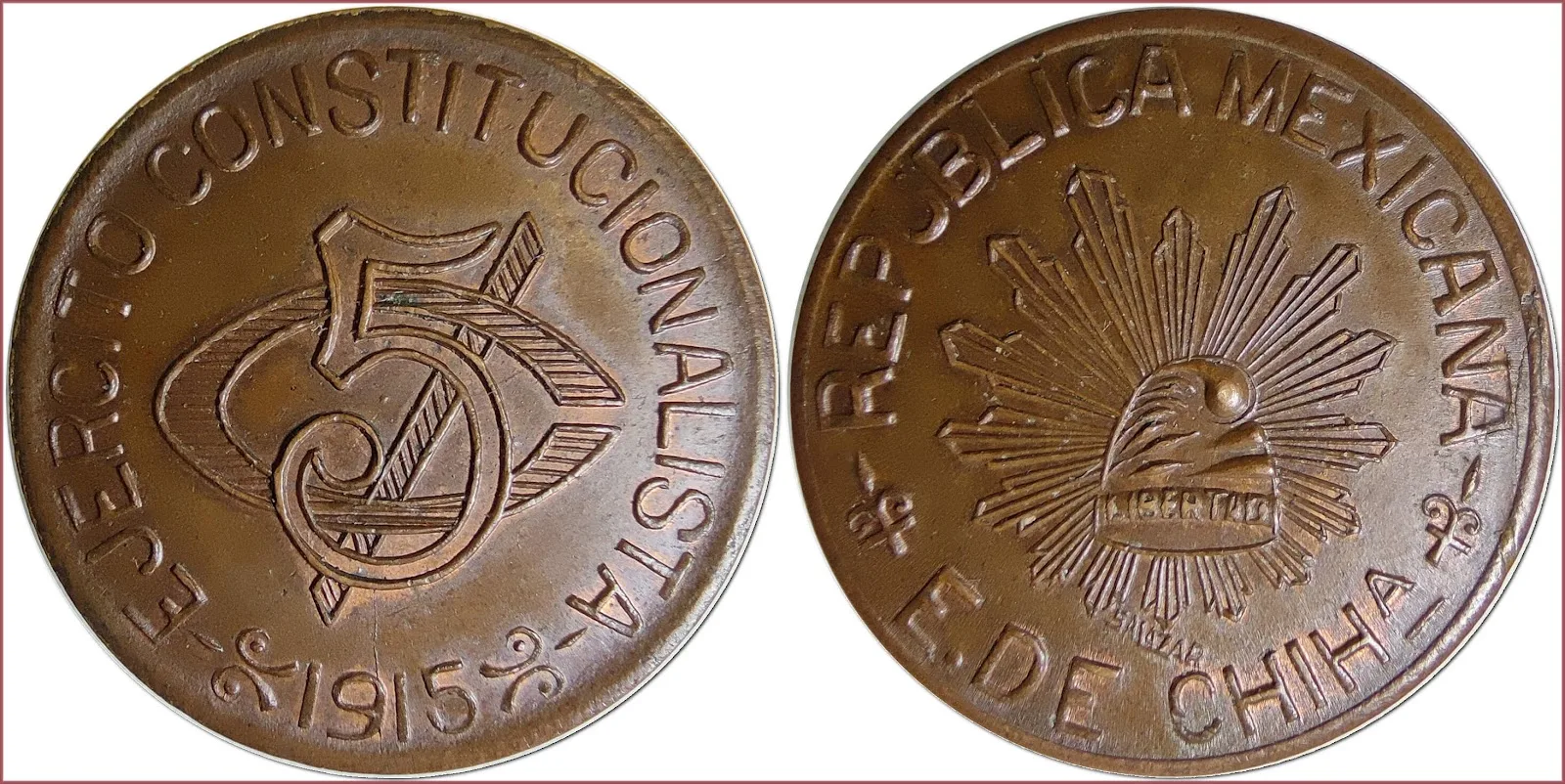CENTAVO: COIN OF CHIHUAHUA (MEXICO)
5 centavos, 1915: Chihuahua state (Mexican Revolution)
This coin in numismatic sources is classified as "Mexico — Revolutionary, Constitutionalist Army". The Constitutional Army (also known as the Constitutionalist Army) was the army that fought against the Federal Army during the Mexican Revolution (1910-1920).
EJÉRCITO CONSTITUCIONALISTA: Constitutional Army.
5 ¢: 5 centavos (the symbol of this fractional monetary unit).
REPUBLICA MEXICANA E.DE CHIHA: Mexican Republic, State of Chihuahua.
Cap & Rays: sun rays and phrygian cap or liberty cap — international symbol of freedom. Inscription LIBERTAD (Liberty).
Engraver's mark SALAZAR under a symbolic composition.
- Copper: 25.35 mm - 6.45 g
- Reference price: 20$
COIN CENTAVO — WHERE & WHEN (coins catalog: by names & emitents)
If we take into account the number of issuers and the geography of distribution, centavo is one of the most common coin names of all times and peoples (along with cent, dollar, centime...).
It is important to note two points:
- Centavo is a relatively young coin (first appeared in the 19th century).
- This coin is unique only to Spanish-speaking and Portuguese-speaking countries (more precisely, all of which share a common colonial past with Spain and Portugal).
The centavo coin was minted during 19-21 centuries by a number of issuers in the territories of the following modern states:
- SPAIN, ARGENTINA, BOLIVIA, CHILE, COLOMBIA, COSTA RICA, CUBA, DOMINICAN REPUBLIC, ECUADOR, EL SALVADOR, GUATEMALA, HONDURAS, MEXICO, NICARAGUA, PARAGUAY, PERU, PHILIPPINES, PUERTO RICO, VENEZUELA (centavo of Spain and territories with a Spanish colonial past usually accounted for 1/100 of the corresponding peso)
- PORTUGAL, ANGOLA, BRAZIL, CAPE VERDE, EAST TIMOR, GUINEA-BISSAU, INDIA, MOZAMBIQUE, SÃO TOMÉ AND PRÍNCIPE (centavo of Portugal and territories with a Portuguese colonial past usually accounted for 1/100 of the corresponding escudo)
The name of the centavo coin echoes the name of the cent coin: they are united by a common etymology — both coins owe their names to the Latin word "centum", which translates as "hundred". The suffix "avo" indicates the part, fraction... That is, "centavo" — hundredths, 1/100.

